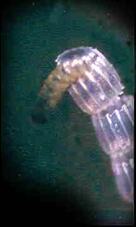| Unique is the egg batch of the map butterfly. It forms small egg turrets on the bottom side of stinging nettle. From every one of these eggs a small caterpillar hatches within a few days. | 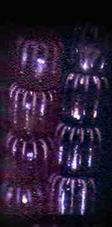 |
|
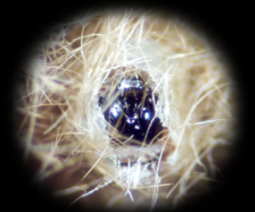 |
||
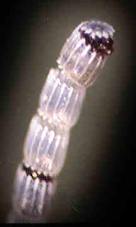 |
After positioning itself, the caterpillar begins to bite through the eggshell with its mandible, the caterpillar's mouthpart for biting. The arrow on the right picture marks the mandible.
|
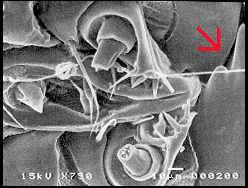 |
© Onview.net Ltd, Microscopy-UK, and all contributors 1995 onwards. All rights reserved. Main site is at www.microscopy-uk.org.uk with full mirror at www.microscopy-uk.net.
